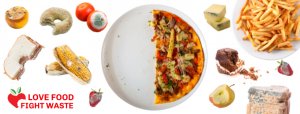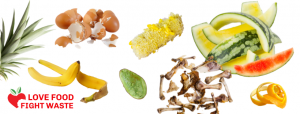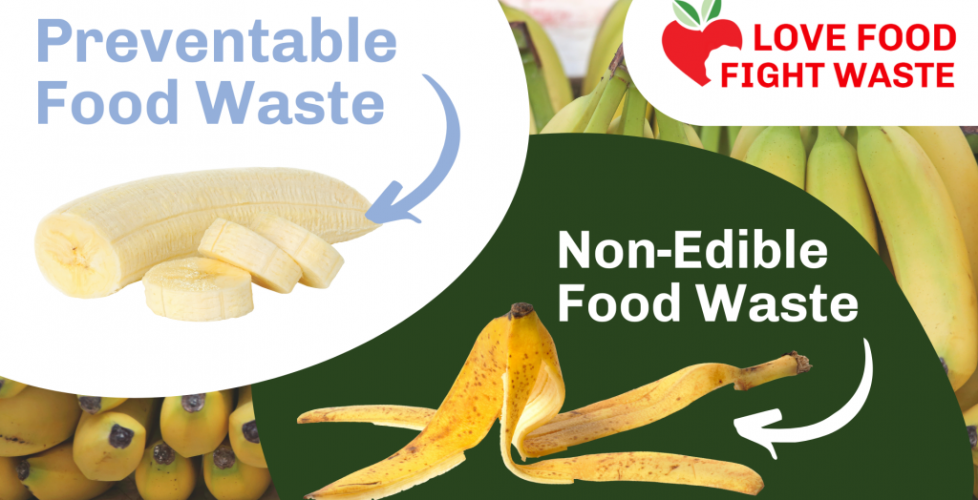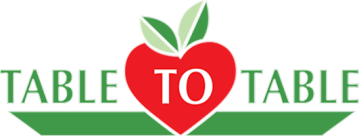Understand the types of food waste
What is the difference between moldy bread and a banana peel, and why does the difference matter?
Monthly Topic Overview
The main takeaway this month is that there are two main types of food waste – preventable and non-edible. Non-edible food waste is unavoidable…it’s the banana peels and meat bones. The Love Food, Fight Waste program is working hard to reduce the preventable food waste.
Preventable food waste is once-edible food that should have been consumed but instead is wasted, such as moldy bread or sour milk. Five of the most wasted foods include milk, cheese, potatoes, apples, and bread. Sound familiar?
- Climate/Environmental Impact: This is the type of food waste that we want to reduce as much as possible. When we waste good, edible food, we are wasting all the resources (farming/agriculture, water use, labor, transportation, packaging, etc.) that went into making that food which results in a big environmental impact. Also, every time we waste food, we are wasting the money we spent on it.

Non-edible food waste is any part of food that is not normally consumed or eaten, such as a banana peel, watermelon rind, corn cob, coffee grounds, or eggshell.
- Climate/Environmental Impact: Unless banana peels and corn cobs are on the verge of becoming the next trendy snacks, we will always have non-edible food waste. What matters most with this type of food waste is how you dispose of it – compost, not trash!

What is the best way to dispose of food waste?
Whether it is preventable or non-edible food waste, both have an equally harmful outcome if landfilled. When organic material (food, yard waste, paper, etc.) ends up in a landfill where there is no air or light, it produces a very potent greenhouse gas called methane. This is directly contributing to climate change.
When food waste cannot be prevented, the best disposal option in our area that reduces methane emissions and negative environmental impact is composting. When food ends up in a compost pile, methane is not produced. Instead, carbon dioxide (less potent than methane) is produced which is part of the natural process of decomposition that is occurring as organic material transforms into compost over time.
How can I compost?
- Compost at home in your backyard with these tips.
- If you are an Iowa City curbside customer, compost at the curb with these tips.
- If you do not have access to curbside composting and are unable to backyard compost, all Johnson County residents can bring food waste and other organic material to the Iowa City Landfill’s Compost Facility.
Activity
When making your next home-cooked meal, spend a few minutes observing the ingredients and identify, if the items were wasted, what type of waste they would each be?
Let’s say you are making something that requires eggs. The inside of the egg is considered edible, and would be preventable food waste if wasted. The eggshell is not something you would typically eat, so this would be considered non-edible food waste.
Tips
- Ways to give non-edible food waste one more use before composting:
- Use a banana peel to polish shoes, reduce skin wrinkles, or relieve bug bites. Learn more from Healthline.
- Use a lemon peel as a household cleaner or deodorizer. Learn more from Healthline.
- Ways to reduce preventable food waste:
- Embrace casserole, soup, sauce, and smoothie recipes! These four recipe categories are warriors at saving food from being wasted.
- Got wilted veggies? These might be perfect for a pasta sauce or soup recipe.
- Got brown bananas and a bruised apple? Make a smoothie!
- Embrace casserole, soup, sauce, and smoothie recipes! These four recipe categories are warriors at saving food from being wasted.
Other Resources
- Natural Resources Defense Council, Inc. (NRDC)
Read more Love Food, Fight Waste topics, brought to you by Table to Table and the City of Iowa City.


